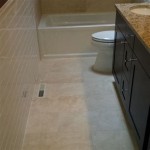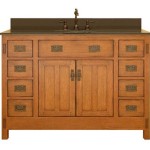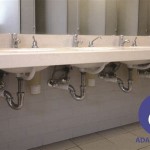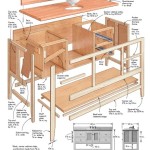Leaking Tap Under Bathroom Sink: Diagnosis, Solutions, and Prevention
A leaking tap under the bathroom sink represents a common household plumbing issue. While seemingly minor, unchecked leaks can lead to significant water waste, increased water bills and potential property damage. Identifying the source of the leak and implementing appropriate solutions are crucial steps in addressing this problem effectively. This article provides a comprehensive overview of the various causes of under-sink tap leaks, diagnostic methods, repair strategies, and preventative measures.
Identifying Potential Causes of the Leak
Several factors can contribute to a leaking tap underneath a bathroom sink. Accurate identification of the underlying cause is essential for selecting the correct repair approach. Common culprits include worn-out washers, corroded O-rings, loose connections, damaged supply lines, and faulty valve cartridges. A thorough inspection of all components is necessary to pinpoint the precise source of the leak.
1. Worn-Out Washers: Washers create a watertight seal between the tap handle and the tap body. Over time, these washers can degrade due to constant use and exposure to water. Hard water, containing high mineral content, accelerates this degradation process. As washers wear down, they lose their ability to effectively seal, resulting in a persistent drip or leak. Inspecting the washers for cracks, deformities, or general wear is the first step in determining if they are the cause of the leak. This generally involves disassembling the tap handle to access the washer. Replacing a worn washer is a relatively simple repair that can often resolve the leaking issue.
2. Corroded O-Rings: O-rings are small, circular rubber seals that prevent water from escaping where different tap components connect. Like washers, O-rings are susceptible to wear and tear, particularly from exposure to chemicals in water and the natural aging process. Corrosion can cause O-rings to become brittle, cracked, or misshapen, leading to leaks. Inspecting O-rings requires a closer examination of the tap's internal components. Specific instructions for accessing these rings vary depending on the tap's design. Replacement of corroded O-rings is typically a straightforward process once the tap is disassembled.
3. Loose Connections: The various connections between the tap, supply lines, and drain assembly can loosen over time due to vibrations and temperature fluctuations. Loose connections create gaps through which water can escape. Inspecting these connections involves physically checking the tightness of all nuts and fittings. Using a wrench, carefully tighten any loose connections. It is crucial to avoid over-tightening, which can damage the fittings or pipes. Teflon tape can be applied to the threads of pipe connections to create a more robust seal.
4. Damaged Supply Lines: Supply lines are the flexible tubes that connect the water supply to the tap. These lines can become damaged due to age, corrosion, or physical impact. Small cracks or pinholes in the supply line can cause a steady stream of water to leak. Carefully inspect the supply lines for any signs of damage, including cracks, bulges, or corrosion. If damage is detected, the entire supply line should be replaced. Supply lines are available in various materials, including copper, stainless steel, and braided polymer. Selecting the appropriate material depends on the water quality in the area and the desired lifespan of the supply line.
5. Faulty Valve Cartridges: Cartridge taps utilize a single handle to control both water flow and temperature. The cartridge within the tap controls the mixing of hot and cold water. Over time, these cartridges can become damaged or clogged with sediment, leading to leaks. A leaking tap from the spout even when the handle is firmly in the off position often indicates a faulty cartridge. Replacing the cartridge involves removing the tap handle and accessing the cartridge assembly. Replacement cartridges are specific to the tap model, so it's important to identify the correct replacement part.
Strategies for Repairing a Leaking Tap
Once the source of the leak has been identified, appropriate repair strategies can be implemented. The complexity of the repair varies depending on the specific cause of the leak. Simple repairs, such as replacing washers or tightening connections, can often be performed by homeowners. More complex repairs, such as replacing cartridges or supply lines, may require the expertise of a qualified plumber.
1. Replacing Washers and O-Rings: Replacing worn-out washers and O-rings is a relatively straightforward repair. The first step involves turning off the water supply to the tap. This is typically accomplished by closing the shut-off valves located under the sink. Once the water supply is shut off, the tap can be disassembled. Careful note should be taken of the order in which the components are removed to facilitate reassembly. The old washers or O-rings can then be removed and replaced with new ones of the correct size and type. Lubricating the new washers or O-rings with plumber's grease can help to ensure a proper seal. After replacing the washers or O-rings, the tap can be reassembled and the water supply turned back on. The tap should be checked for leaks after reassembly.
2. Tightening Loose Connections: Tightening loose connections is another simple repair that can often resolve leaks. Using a wrench, carefully tighten any loose nuts or fittings. It is important to avoid over-tightening, which can damage the fittings or pipes. Teflon tape can be applied to the threads of pipe connections to create a more robust seal. Before applying Teflon tape, the threads should be cleaned and dried. The Teflon tape should be wrapped around the threads in a clockwise direction, overlapping each layer. After applying the Teflon tape, the connection can be reassembled and tightened. The connection should be checked for leaks after tightening.
3. Replacing Supply Lines: Replacing damaged supply lines is a more involved repair that may require some plumbing experience. The first step is to turn off the water supply to the tap. The old supply line can then be disconnected from the tap and the water supply valve. A basin wrench can be used to loosen the connections. The new supply line should be of the same length and diameter as the old one. The new supply line should be connected to the tap and the water supply valve, ensuring that the connections are tight. Teflon tape can be used to seal the connections. After the new supply line is installed, the water supply can be turned back on and the connections checked for leaks.
4. Replacing Valve Cartridges: Replacing valve cartridges requires specific knowledge of the tap's design and the proper tool for the task. The procedure generally involves removing the tap handle, escutcheon, and retaining clips to access the cartridge. The old cartridge is then removed and replaced with a new one of the correct type. Cartridge types are specific to the faucet brand and model. The tap is then reassembled, and the water supply turned back on. Leaks should be checked after reassembly to ensure proper installation.
5. Seeking Professional Assistance: For complex or persistent leaks or when uncertainty exists regarding the repair process, seeking professional assistance from a qualified plumber is advisable. Plumbers possess the necessary expertise and tools to diagnose and repair even the most challenging plumbing issues. Attempting to repair a leak without the proper knowledge or tools can lead to further damage and potentially costly repairs. A professional plumber can ensure that the repair is performed correctly and efficiently.
Implementing Preventative Measures
Preventative measures can significantly reduce the likelihood of future under-sink tap leaks. Regular maintenance and proactive inspection can identify and address potential issues before they escalate into major problems. Implementing these preventative measures can save homeowners time, money, and the inconvenience of dealing with unexpected leaks.
1. Regular Inspections: Regularly inspecting the tap and surrounding plumbing for signs of leaks, corrosion, or damage is crucial. This inspection should include checking the connections of the supply lines, the condition of the washers and O-rings, and the overall integrity of the tap. Early detection of potential problems allows for timely intervention, preventing minor issues from becoming major ones. Inspections should be conducted at least twice a year, or more frequently if the tap is heavily used.
2. Maintaining Proper Water Pressure: Excessive water pressure can put undue stress on the tap's components, accelerating wear and tear and increasing the risk of leaks. Installing a pressure regulator on the main water supply line can help to maintain a consistent and safe water pressure throughout the house. The ideal water pressure is typically between 40 and 60 psi. A water pressure gauge can be used to monitor the water pressure.
3. Protecting from Hard Water: Hard water, containing high mineral content, can contribute to corrosion and scale buildup, damaging tap components and increasing the likelihood of leaks. Installing a water softener can remove minerals from the water, protecting the tap and other plumbing fixtures from damage. Various types of water softeners are available, including salt-based and salt-free systems. Consulting with a plumbing professional can help determine the most appropriate water softener for a specific household.
4. Using Quality Replacement Parts: When replacing worn-out parts, such as washers, O-rings, or supply lines, it is important to use high-quality replacement parts. Inferior parts may not provide a proper seal or may degrade quickly, leading to premature failure and leaks. Purchasing replacement parts from reputable suppliers ensures that the parts meet industry standards and are designed for long-lasting performance.
5. Proper Installation Techniques: Ensuring that the tap and all associated plumbing components are properly installed is essential for preventing leaks. Following manufacturer's instructions and using appropriate tools and materials is crucial. If unsure about the proper installation techniques, seeking professional assistance from a qualified plumber is recommended.

How To Fix Pipework A Tap Faucet Leaking Under The Sink

4 Ways To Fix A Bathroom Sink Leaking Underneath 1 Tom Plumber

How To Repair A Leaking Sink Trap

How To Fix Kitchen Sink P Trap Leaking Pipe Connection Nut

How To Fix A Leaking Bathroom Sink Paschal Air Plumbing Electric

How To Fix A Dripping Bathroom Faucet

How To Fix A Leaking Water Supply Shut Off Valve Easy Diy For Beginners

How To Fix Constant Leak Under Bathroom Bunnings Work Community

Few Know This Easy Trick To Stop Leaking Valves Instantly

How To Fix Bathroom Sink Drain Leaks Underneath Gasket Threads Solved
Related Posts







